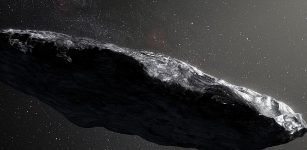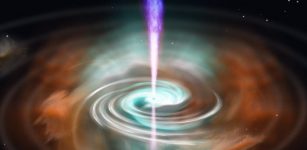White Dwarf Composed Almost Entirely Of Pure Oxygen – Discovered In Constellation Draco
MessageToEagle.com – A newly discovered white dwarf, about 1,200 light-years away in the constellation Draco, has no hydrogen or helium at its surface.
Instead, a star – nicknamed SDSS J124043.01+671034.68 (or ‘Dox’) has an atmosphere made up of 99.9 percent oxygen, researchers say.
“We only found one, so it is a rare event,” says study coauthor Kepler de Souza Oliveira Filho, an astronomer at the Federal University of Rio Grande do Sul in Porto Alegre, Brazil.
“But, every theory must be able to explain all events, even the rare ones.”

Most stars die by gently casting the bulk of their gas into space, leaving behind a dense, hot core. Heavy elements such as carbon and oxygen sink to the core’s center while hydrogen and helium float to the surface, hiding what lies beneath.
While oxygen dominates this white dwarf’s atmosphere, neon and magnesium come in second and third — a clue that the original star was much bigger than our sun. Big stars can crank up their core temperatures high enough to fuse progressively heavier elements.
A star between about six and 10 times as massive as the sun ends up with a core made of mostly oxygen, neon and magnesium. Such a white dwarf should be a bit heavier than our sun, and this newly discovered misfit appears to have about half as much mass.
A nearby stellar companion could have siphoned gas off the dying star, starving the white dwarf of mass, the researchers suggest. Thermonuclear excavation during the star’s end game could also lead to an underweight white dwarf. If enough hydrogen piled up on the core, it might have triggered a runaway nuclear explosion that shaved off the white dwarf’s outer layers.
“While plausible, it’s hard to see how that could remove half of the white dwarf’s mass,” Patrick Dufour, an astrophysicist at the University of Montreal.
“That’s very strange,” he says. “It could work, but I doubt it would leave a low-mass white dwarf.”
“This white dwarf might only be a freak…. Although often in science, it’s the exception that makes you understand a great deal later on.”
Research is published in the April 1 Science.
MessageToEagle.com
Expand for references









